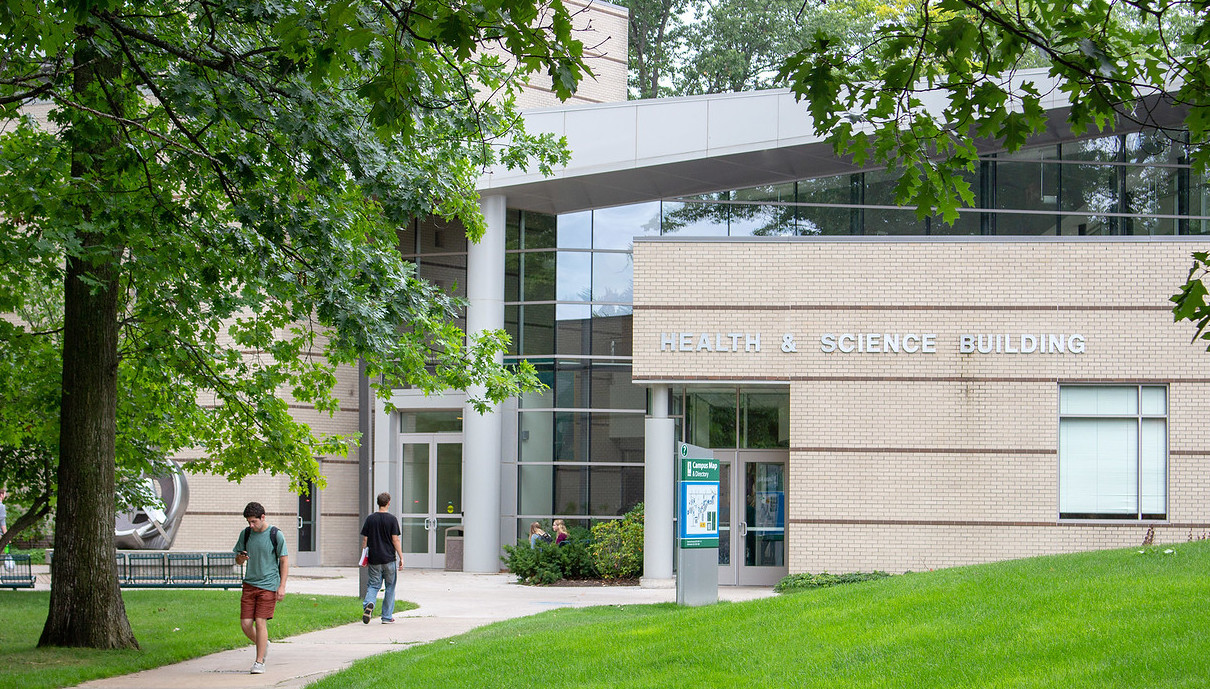
Enrollment Declines At NMC Likely To Bring Focus on Adult Learners
By Craig Manning | Aug. 4, 2021
No surprise that NMC’s enrollment last fall was down significantly. Amidst the pandemic, many community colleges experienced similar drops. But the low numbers -- which also brought in almost $1 million less in tuition dollars -- are due to more than just COVID-19, say NMC representatives: Traverse City’s aging population means the college must explore big changes in how it attracts students to campus, including a growing focus on adult learners.
At the last NMC Board of Trustees meeting, held on June 28, Todd Neibauer, NMC’s vice president for student services and technologies, gave an enrollment update which showed a total headcount of 2,331 students enrolled for fall 2021 classes. That number is up slightly from where things stood last year in late June. But it’s still down substantially from both fall 2018 (2,837 students enrolled) and fall 2019 (2,789 students).
Last fall, NMC’s total number of contact hours dipped more than 20 percent compared to fall 2019, tumbling from 31,201 hours to 24,800. This year, that number is up slightly, to 25,614 as of June 22. With only minimal growth in those numbers, though, NMC’s tuition dollars for the fall semester are still down from where they were pre-pandemic: about $4.9 million versus more than $5.9 million in fall 2018.
What’s behind these declines, and what long-term changes might they dictate for NMC?
Certainly the pandemic is a factor. According to the National Student Clearinghouse Research Center’s fall 2020 college enrollment report, U.S. community colleges saw a 10.1 percent decline in enrollment during the fall 2020 semester. No other segment of the higher education ecosystem saw a bigger hit due to the pandemic. In fact, public four-year universities, private nonprofit four-year institutions, and private for-profit four-year schools all actually saw gains in enrollment last fall compared to the year before.
Despite these nationwide trends, Neibauer doesn’t blame NMC’s dipping enrollment solely on COVID-19.
“Before the pandemic, we already had a demographic trend that was seeing fewer and fewer [high school] graduates in the state,” he explains. “And that played out here as well: We had declining numbers of graduates from our high schools. That’s just a population shift thing, and it’s something that's projected to continue well into the 2030s. So that’s was already a problem for us. What we saw with the pandemic, then, on top of that, we had fewer high school graduates than we had anticipated [locally], and a lower percentage of them choosing to go to college right away.”
These trends weren’t just affecting NMC or Traverse City. Neibauer says that, statewide, Michigan saw fewer high school graduates in 2020 – a decline he guesses had to do with dipping attendance and performance due to schools going all-virtual in the spring of that year. Neibauer also says national statistics from 2020 showed an overall 2.5 percent drop in the number of recent high school graduates enrolling in college within six months of graduation, with virtual courses and overall pandemic “uncertainty” driving more students to take gap years or gap semesters.
Still, Traverse City might be in a unique situation due to its aging population. Networks Northwest CEO Matt McCauley recently told The Ticker that 20 percent of the Grand Traverse County population is 65 or older and that that area “lag[s] behind the state and the nation” in terms of younger demographics. Those statistics have been borne out by local high school graduation trends over the past 10-15 years. In 2008, Northwest Education Services (formerly Traverse Bay Area Intermediate School District, which spans Antrim, Benzie, Grand Traverse, Kalkaska, and Leelanau counties) recorded 18,178 graduates across its radius. By 2020, that number was down to 14,146 – a 23-percent drop in just 12 years.
“If you look at the line [from 2008 to 2020], it’s mostly directly down, with a few little bumps here and there, as you might expect from variations in demographics,” Neibauer says. “And if you look at the latest projections on population from the Michigan Department of Technology, Management & Budget, you can really see the declining population numbers in some of those younger age groups.”
The good news, Neibauer says, is that NMC is still reliably drawing students from local high schools.
In an average year, roughly 60 percent of local high school graduates matriculate to colleges within six months. Of that group, around 40 percent enroll at NMC. That rate will occasionally drift up or down “a few percentage points, but has stayed fairly static in recent memory.” By promoting the key draws of NMC to high school students – including local proximity, lower tuition costs, and small class sizes – Neibauer thinks the college is reaching a consistently solid portion of graduates.
The bad news? As Traverse City’s younger population declines, NMC is drawing its percentage of local college-bound students from an ever-shrinking pie – hence the declining figures for enrollment, contact hours, and tuition dollars.
In response, NMC is ramping up its focus on adult learners – an approach that will likely figure heavily into the college’s in-progress strategic planning efforts. In June, NMC hosted an event called “the Future Summit,” which featured four “EdTalks” covering topics important to the college’s future. One of those talks was a presentation by Dr. Michael A. Baston – president of Rockland Community College in Suffern, New York – about educating adult learners “through alternative credentials and accelerated programs.” Takeaways from the EdTalk sessions are meant to form the backbone for the next stages of the strategic planning process, which will continue for the remainder of the year.
Neibauer anticipates that having a detailed and purposeful adult education strategy laid out in the strategic plan will allow NMC to continue expanding its already-growing population of older students.
“If you look at our numbers for students over 25, they’re up over last year by a lot more than the percentage that younger students are down,” Neibauer explains. “So that’s kind of balancing things for us. I was actually projecting a small decline [in enrollment] for fall, and we’re up over 1.5 percent. So stay tuned for December when the board will adopt the strategic plan, because the adult population is going to be a big target for us, to try to help them step up in their careers.”
Comment






